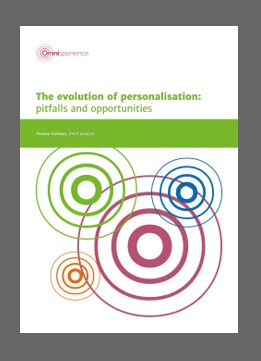Last December, Gartner predicted that by 2025 80% of marketers who had invested in personalisation will abandon their efforts. They said this is because personalisation will fail to show adequate ROI and because of the perils of data collection, integration and protection.
But does this really herald the end of personalisation?
While Gartner’s prediction may seem controversial, in fact it isn’t. When you turn a tactic into a goal, you end up forgetting why you’re doing something in the first place and inevitably make mistakes. Personalisation isn’t just about making marketing more effective – as measured in the cold ROI of revenue per marketing dollar – but about transforming the relationship with customers. This means it has to be applied across the entire experience from marketing to products, pricing, bundling, offers, service, care, communications and so on.
But personalisation also has to be adaptable. In some areas of experience personalisation will seem more intrusive than others. Companies need to gauge where and how far to personalise, and they need to interact and engage with customers to do this. Personalisation isn’t something that should be imposed upon customers, but something that comes out of an interaction with them. Employing ‘selfie’ technologies such as self-configuration and self-personalisation puts the customer in control and avoids many of the pitfalls unwary companies could fall into.
Personalisation isn’t new. What’s new is using technology to automate and industrialise personalisation to create intimacy and engagement at scale.
Teresa Cottam, Chief Analyst, Omnisperience
Part of the problem here is that ‘personalisation’ is an inexact term that is applied to a wide range of different scenarios. The concept of personalisation is as old as the hills, but specifically what we’re talking about now is the industrialisation of personalisation so that it can be done at scale, underpinned by technology.
Understanding the different flavours of personalisation is critical. As is appreciating that personalisation exists on a spectrum and that customers’ tolerance for it, as well as its effectiveness, depends upon the pre-existing relationship companies have with their customers.
This relationship is the foundation for successful personalisation. Just as with any other relationship, presumption will offend and over-familiarity will alienate. Relationships, including those between customers and companies, are built one step at a time and, as trust increases, so greater intimacy will be tolerated and even expected.
Personalisation is the icing on the cake; it isn’t the cake itself because in this metaphor the cake is the relationship.
Teresa Cottam, Chief Analyst, Omnisperience
The relationship is built on many things, including rewarding loyalty, keeping promises, providing a good service, having consistently expressed values that you stick to, fixing problems efficiently and communicating effectively.
More accurately, personalisation isn’t dead, but our understanding and utilisation of it is changing. Companies rushed to adopt Personalisation 1.0 as a quick fix, a panacea to solve all customer ills. Personalisation 2.0 is far more nuanced and accepts that while it is a powerful tool, personalisation has to be used in conjunction with other strategies not for short-term ROI but to build and deepen a long-term relationship with customers. This relationship will deliver the ROI that companies seek, but only if they also trust that the long-term benefits of loyalty and engagement are worth investing in.

Read our NEW report which outlines the evolution of personalisation.
